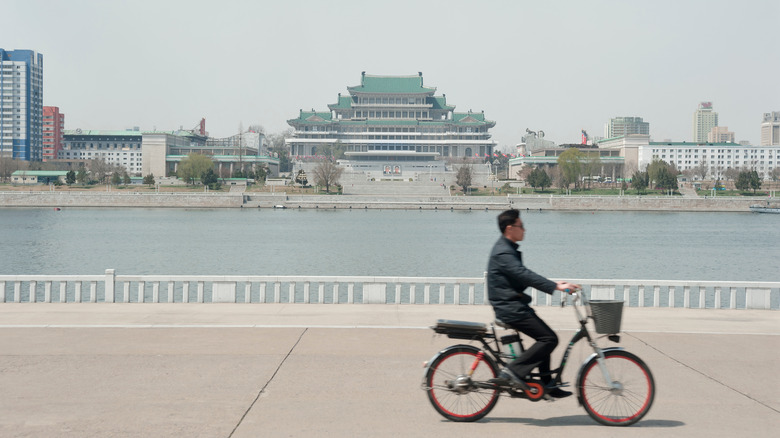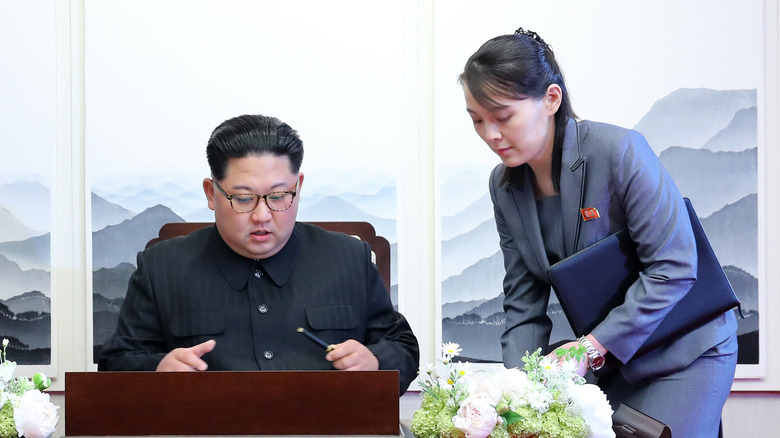Why We Still Don't Know What's In North Korea's Secret Room 39
Much of what goes on inside North Korea's borders is an absolute mystery to everyone outside of the country. The rogue dictatorship seems to thrive on being a real-life James Bond villain state just waiting for the time to be right to hatch its dastardly plan to take over or destroy or otherwise fundamentally alter the world. Although the regime is often lampooned in the international media for its gaffs, failed technological exploits, and the extreme excesses of the few at the top, North Korea has joined the ranks of countries with nuclear weapons, so other world superpowers like the United States and the United Kingdom keep a close eye on what goes on in the hermit country.
But they can't get eyes everywhere, and one of those dark corners of the authoritarian regime is Room 39. While we have an idea of the plots cooked up in this secretive space, what we don't know about what goes on inside it could be even worse than our wildest imaginations. Let's take a look at what we do know about the unscrupulous activities of North Korea's secret Room 39.
Counterfeiting, conspiring, and colluding with terrorists: a day in the life of North Korea's secret Room 39
Room 39 has successfully adapted to meet the changing global geopolitical climate, becoming a legendary source of international malfeasance and all-around supervillainy as a means to keep the royal family pampered and happy while the rest of North Korea wallows in poverty and oppression. Kim Jong-un's sister Kim Yo-jong (seen above with her strongman brother) keeps the room's operations benefiting the royal family.
One of the things we do know about Room 39 is that it was the origin of one of the most successful counterfeiting operations in history. According to Vanity Fair, the fake $100 bills produced by North Korea in the first decade of the 2000s were so good that they were called "supernotes." They were so much like real Benjamins that they even passed electronic devices specifically designed to detect ersatz currency.
But that's not all. The Infographics Show notes how Room 39 has been used for everything from illegal arms deals with known terrorists and other dictators who brutally oppress their own people to cybercrime operations that attempt to rob entire countries of billions of dollars. In fact, cybercrime has become North Korea's main source of income in recent years. One ransomware plot nearly purloined over $1 billion from the New York Federal Reserve, and they would have gotten away with it if it weren't for the pesky problem of orthography. The hackers made a grave typographical error with they misspelled "foundation" as "fandation," alerting authorities to the ruse.

